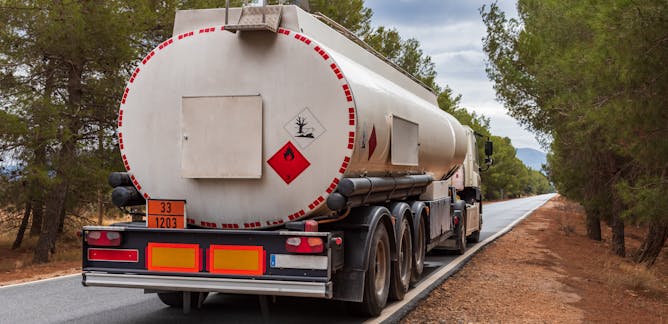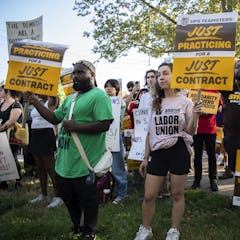
Articles sur Transportation
Affichage de 1 à 20 de 147 articles

Nobody wants to see an accident involving flammable, corrosive or radioactive material. But understanding the rules put in place to prevent these accidents isn’t easy.

Human error may have contributed to the tragic accident in Baltimore harbour on March 26. Designing systems that reduce the potential for human error may help prevent future incidents.

The Garden State is the only one in the country that forbids self-service gas stations − and that’s not likely to change anytime soon.

A cargo ship leaving the Port of Baltimore collided with a bridge in a technological disaster that may have claimed the lives of up to six maintenance workers on the bridge at the time.

A class action lawsuit filed against Uber and Lyft in British Columbia draws attention to the experiences of wheelchair users.

The new rule isn’t a mandate for electric vehicles, but it will sharply increase their market share over the coming decade.

While barriers still remain, the benefits of electrifying the transport sector are clear for both society and individual firms.

Improving the intercommunity mobility of First Nation Peoples is a road to more inclusive and safer futures. This calls for recognizing Indigenous agency and sovereignty when developing solutions.

Many incentive programs promote e-bike use, but they aren’t necessarily targeting the right people for the right reasons.

Artificial intelligence has been around for decades, and is much more than just ChatGPT. Here’s a rundown of some lesser known AI applications.

Companies like Uber and Lyft have a long way to go in improving worker safety to ensure both drivers and passengers feel safe on the road.

Transport development paved the way for colonization and is directly linked to the chronic and extreme social inequities Indigenous communities continue to face to this day.

Focusing solely on humans at the expense of other life in the aftermath of train derailments limits the effectiveness of our disaster response management.

Cars are getting bigger on US roads, and that’s increasing pedestrian and cyclist deaths. A transport scholar identifies community-level strategies for making streets safer.

Danfo drivers are often intolerant, bringing down the image of Lagos as a destination.

US cities are starting to reform laws that required developers to provide minimum amounts of parking. But there’s more they can do to loosen the auto’s grip on downtowns.

Talks between the the International Brotherhood of Teamsters and company bosses have broken down. A supply chain expert explores what could happen next.

Transportation apps can make public transit more accessible for riders with disabilities. But many apps remain inaccessible due to the cost of adding features and the lack of regulations.

Ontario has a unique opportunity to develop more effective public-private partnerships to accelerate the implementation of high-speed rail.

Transportation agencies plan for events like major bridge or highway collapses, but these events can disrupt traffic for months and affect residential neighborhoods as well as motorists.
